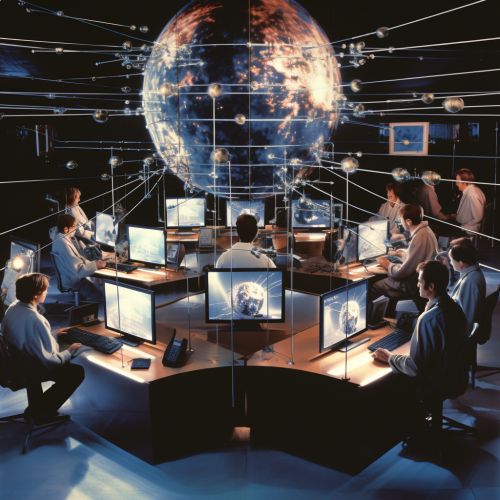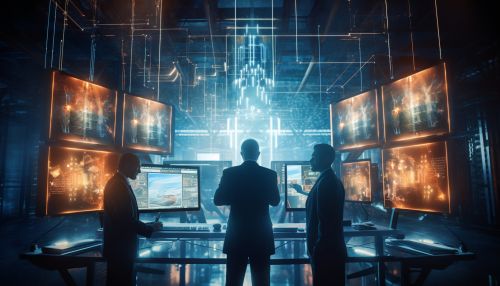Multi-Agent Systems
Introduction
A multi-agent system (MAS) is a computerized system composed of multiple interacting intelligent agents. These systems can resolve complex issues that are difficult for an individual agent or monolithic system to solve. Interaction in such systems could be either cooperative (for example, team play), competitive (for example, auction), or both.
Overview
Multi-agent systems can solve problems that are difficult or impossible for an individual agent or monolithic system to solve. Intelligence may include methodic, functional, procedural approaches, algorithmic search or reinforcement learning. Despite considerable overlap, a multi-agent system is not always the same as an agent-based model (ABM). The goal of an ABM is to search for explanatory insight into the collective behavior of agents obeying simple rules, typically in natural systems, rather than in solving specific practical or engineering problems.
Characteristics
The agents in a multi-agent system have several important characteristics:
- Autonomy: the agents are at least partially autonomous
- Local views: no agent has a full global view of the system, or the system is too complex for an agent to make practical use of such knowledge
- Decentralization: there is no designated controlling agent (or the system is effectively reduced to a monolithic system)
Agent Interaction
In multi-agent systems, agents interact primarily by sending and receiving messages. However, the exact specifics of the message passing system are defined by the agent communication language. The most common form of interaction is through direct communication between agents. This communication can be either synchronous or asynchronous.
Agent Communication Languages
Agent Communication Languages (ACLs) are languages used by agents in multi-agent systems to communicate with each other. ACLs provide a standard for agent communication in multi-agent systems. The most common ACL is the Knowledge Query and Manipulation Language (KQML).
Agent Architectures
There are three main types of agent architectures:
- Reactive agents: These agents do not have internal representations of the world. They react to the environment.
- Cognitive agents: These agents have a model of the world and use it to reason about the world.
- Hybrid agents: These agents combine aspects of both reactive and cognitive agents.
Applications
Multi-agent systems can be used in a variety of applications, including:
- Distributed computing: Multi-agent systems can be used to solve complex computational problems by distributing the workload among multiple agents.
- E-commerce: Multi-agent systems can be used to model economic behavior and enable automated transactions.
- Robotics: Multi-agent systems can be used to coordinate the behavior of multiple robots, enabling them to perform tasks more efficiently and effectively.
Challenges
Despite their potential, multi-agent systems also present several challenges. These include:
- Coordination: It can be difficult to coordinate the actions of multiple agents, especially when they are working towards different goals.
- Communication: Ensuring effective communication between agents can be challenging, especially when the agents are distributed across different locations.
- Trust and reputation: In systems where agents can act independently, issues of trust and reputation become important.


